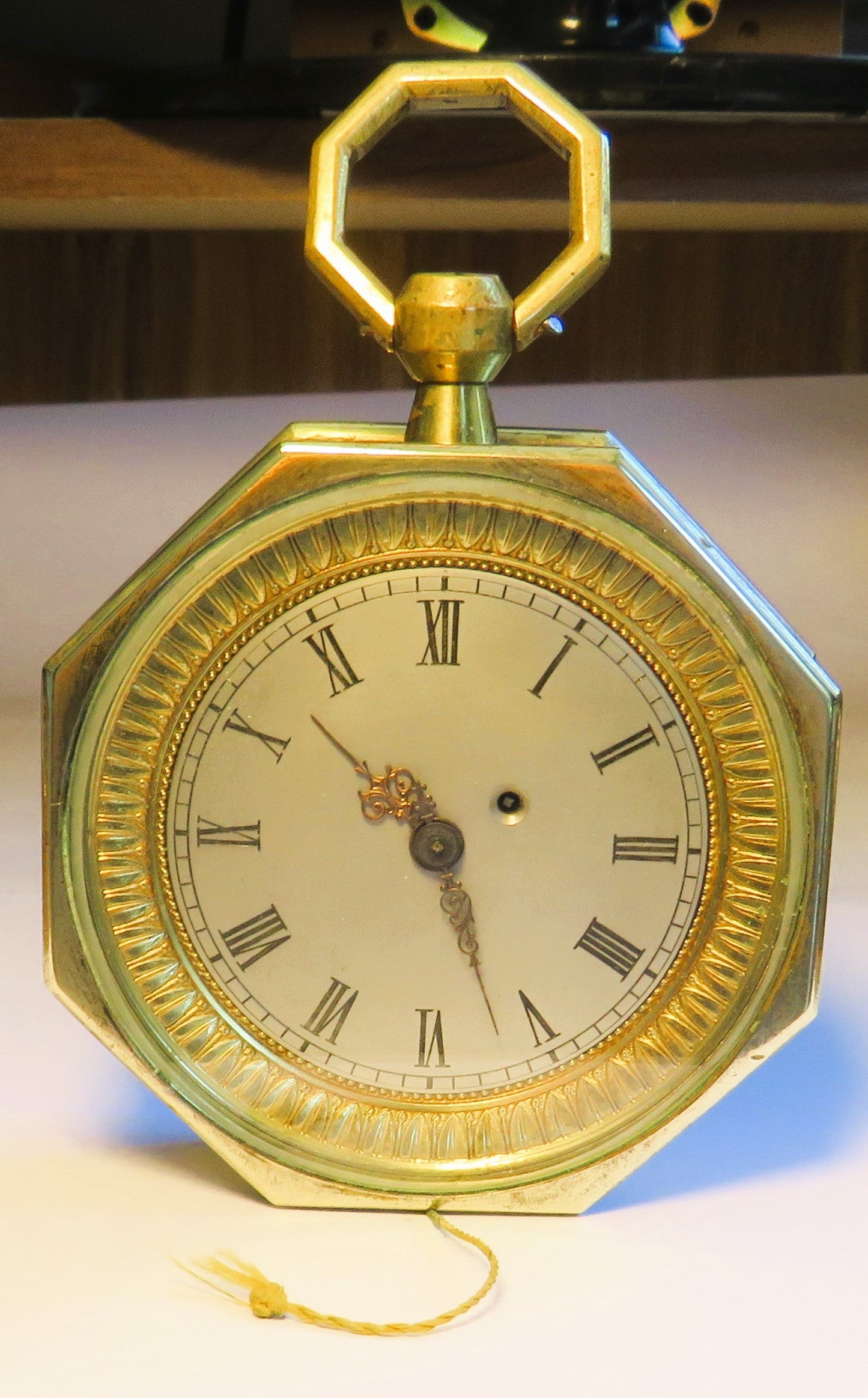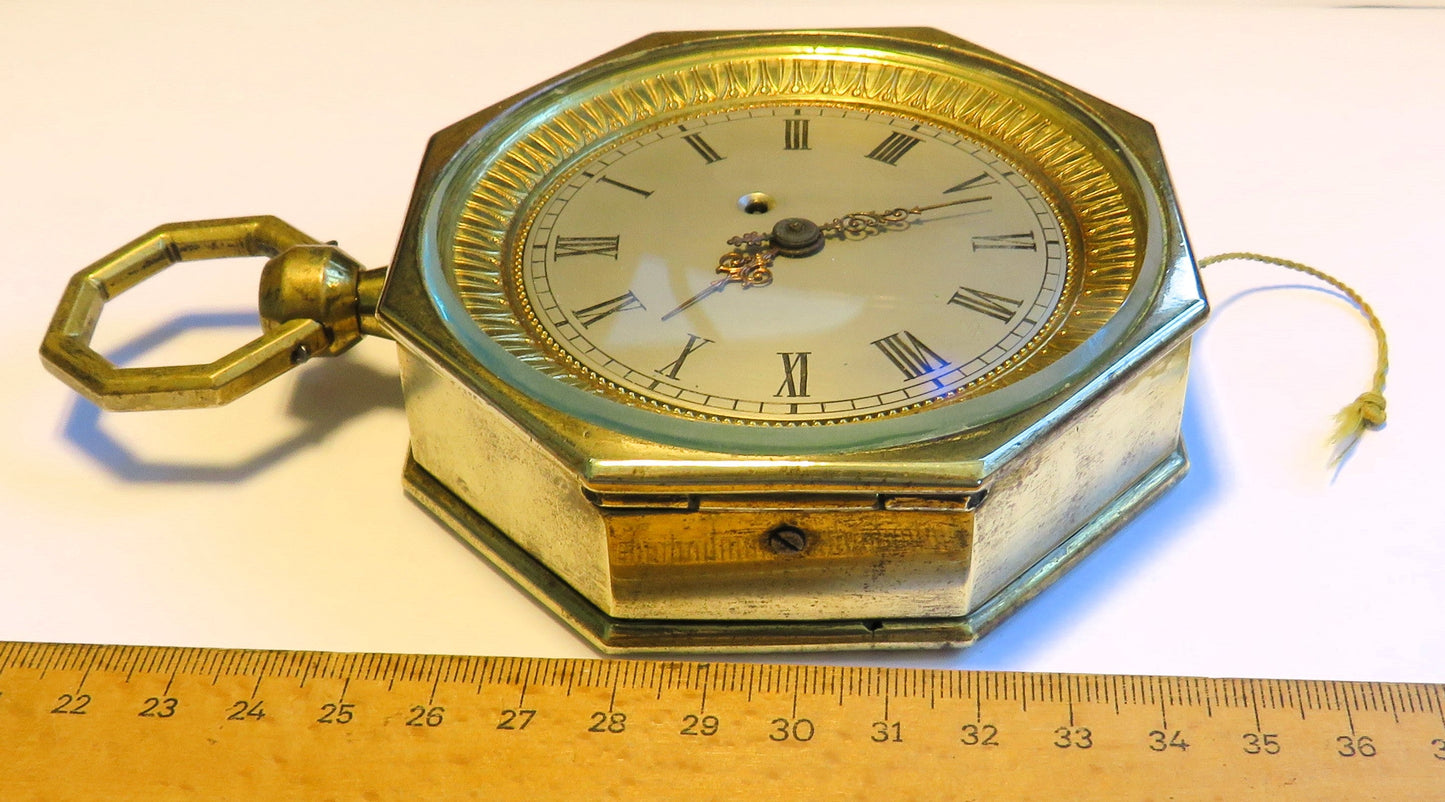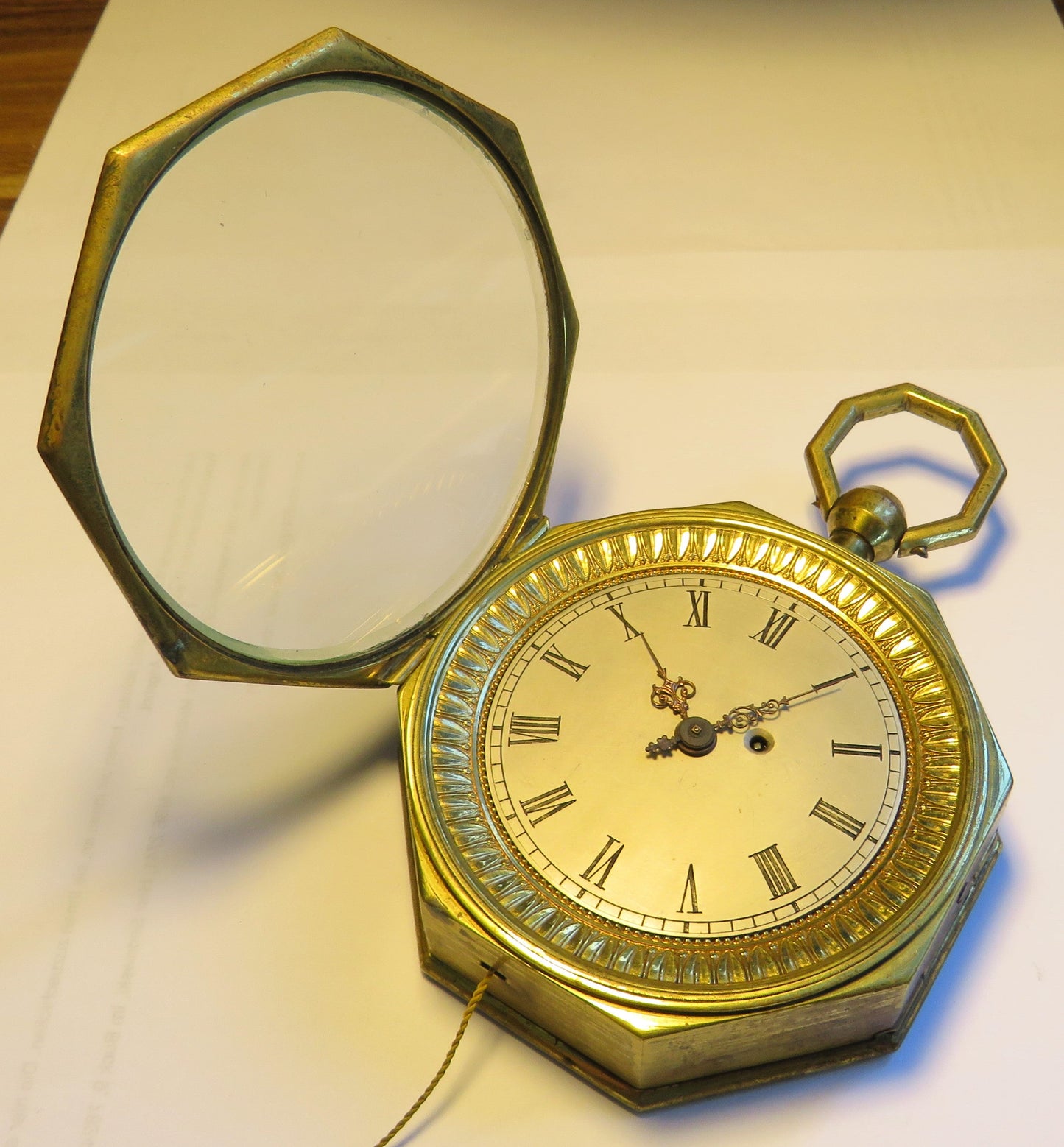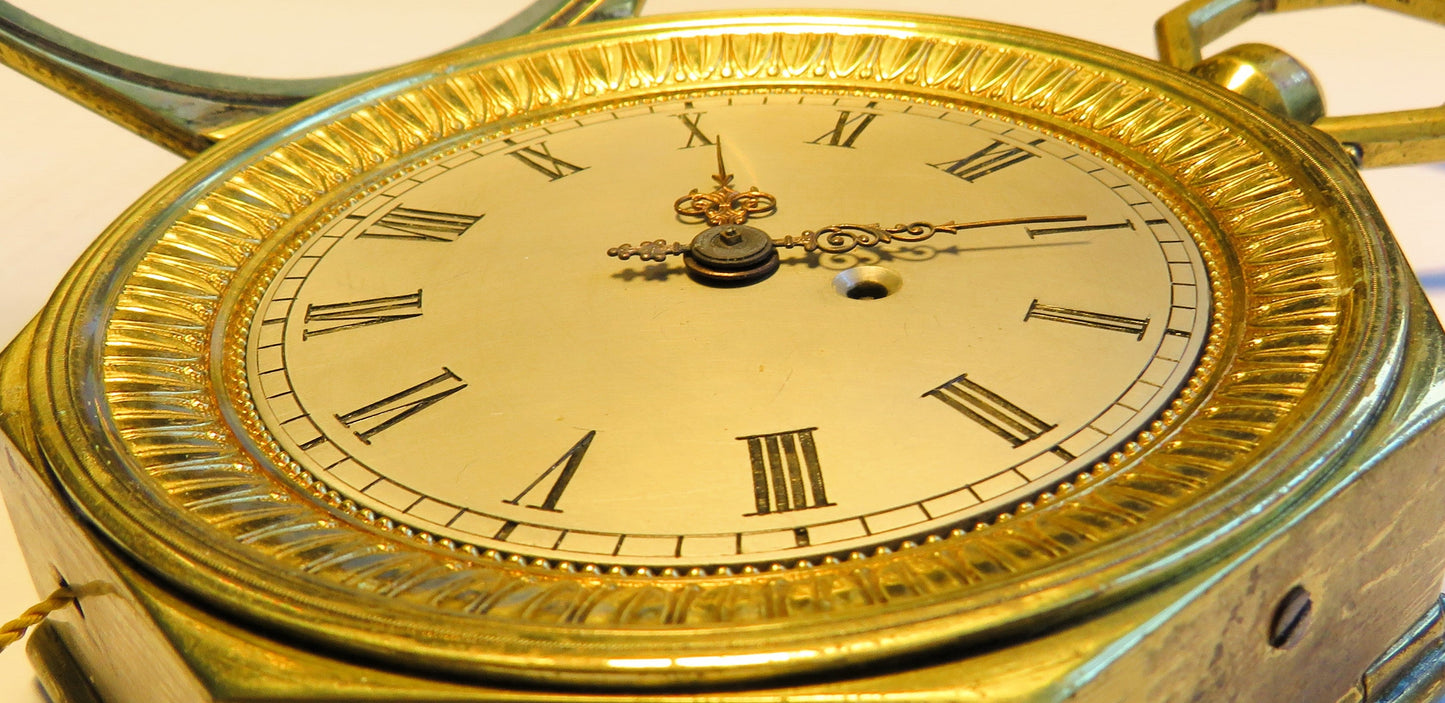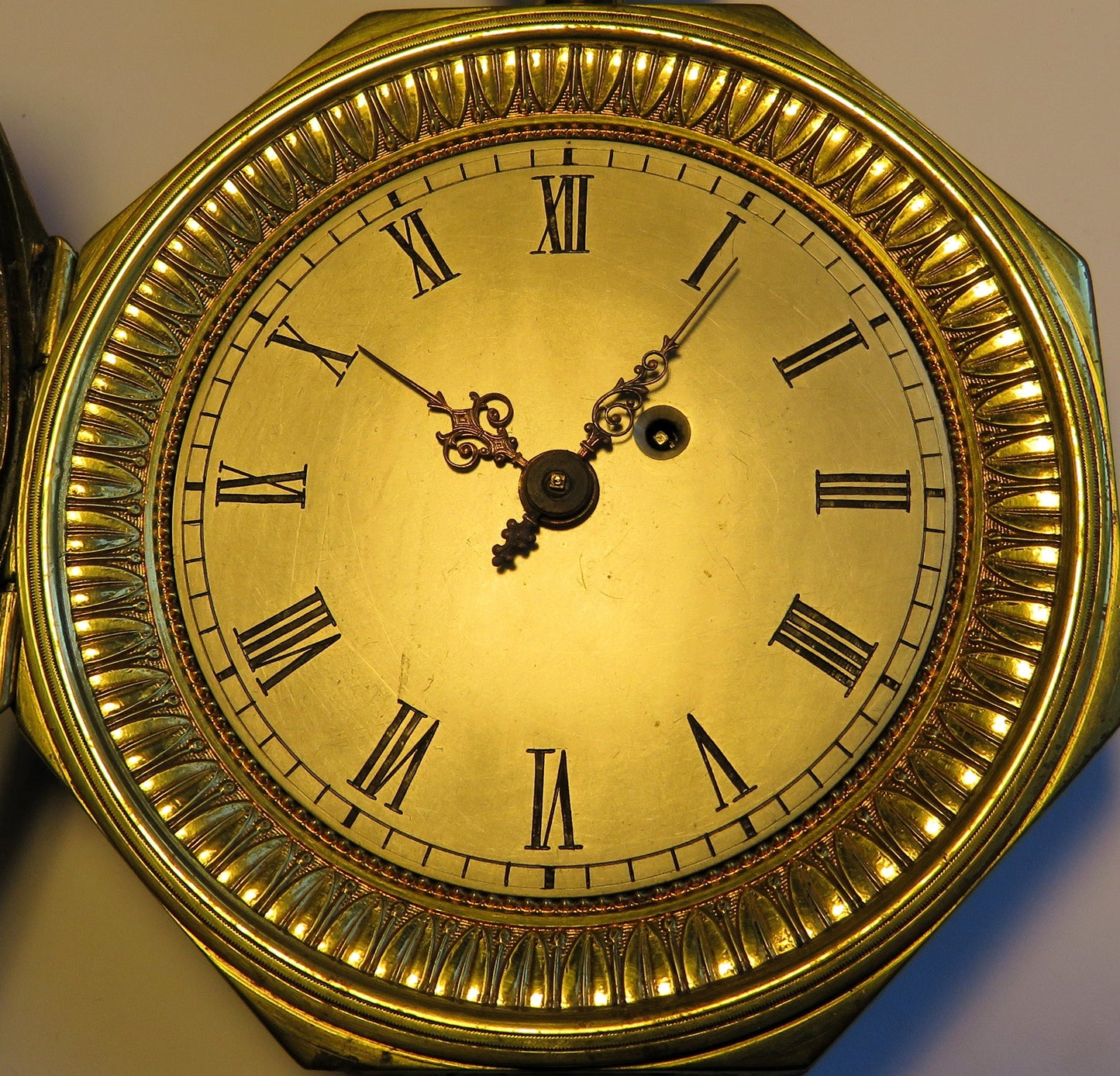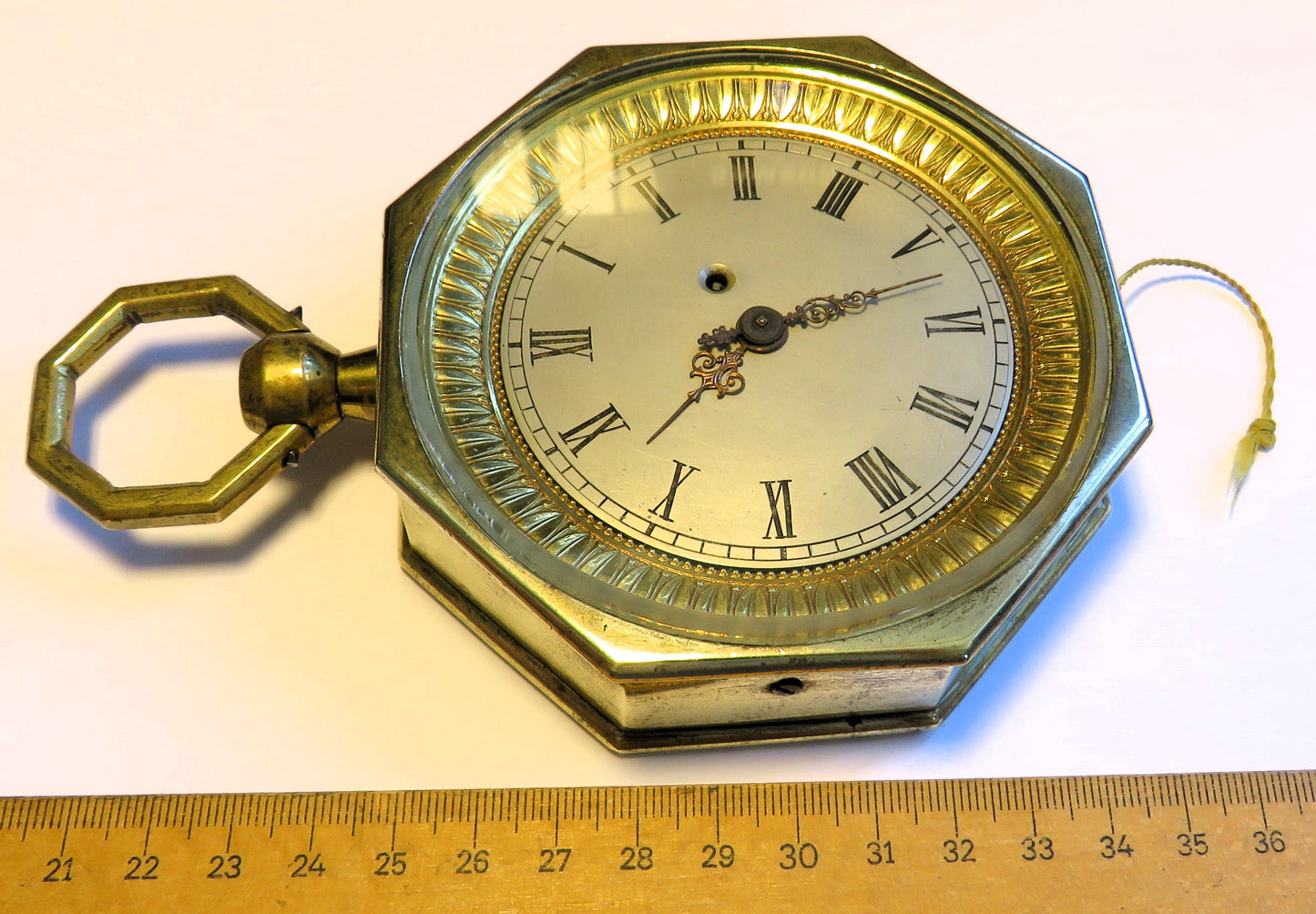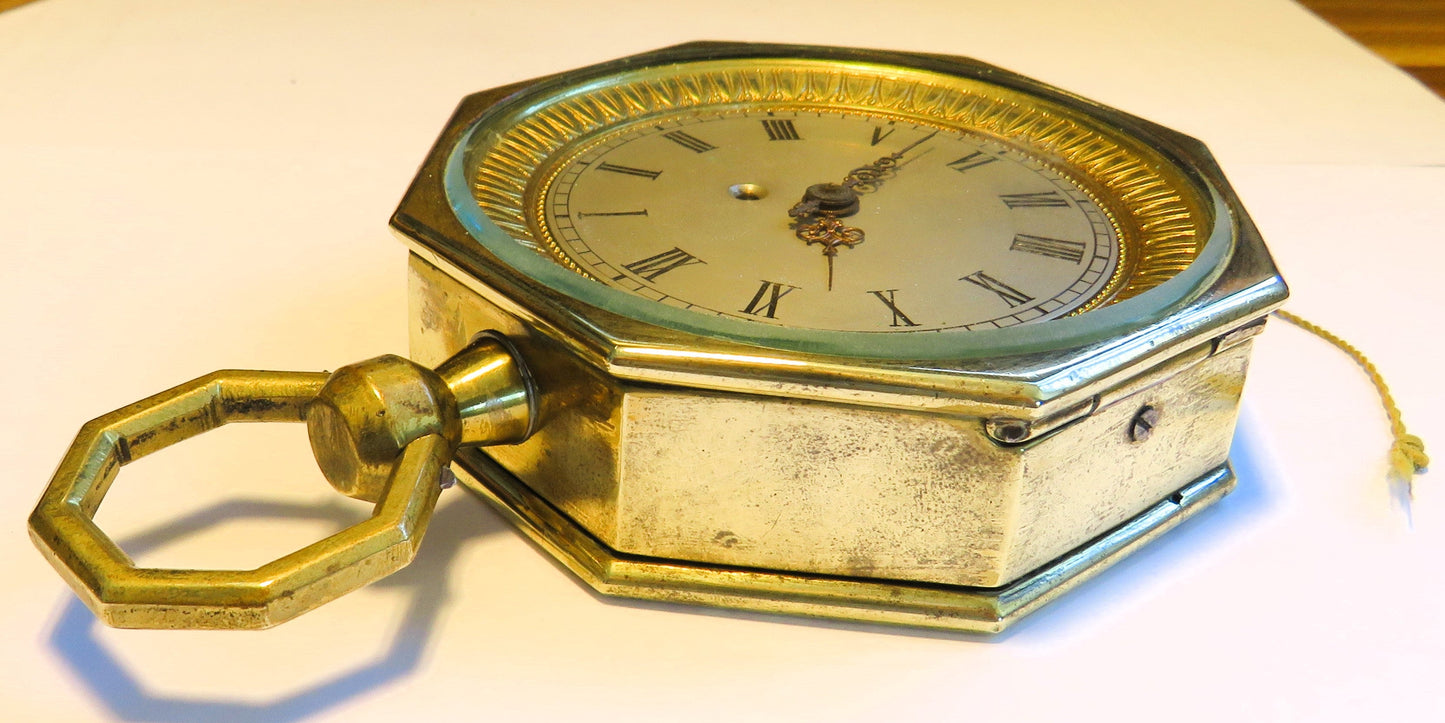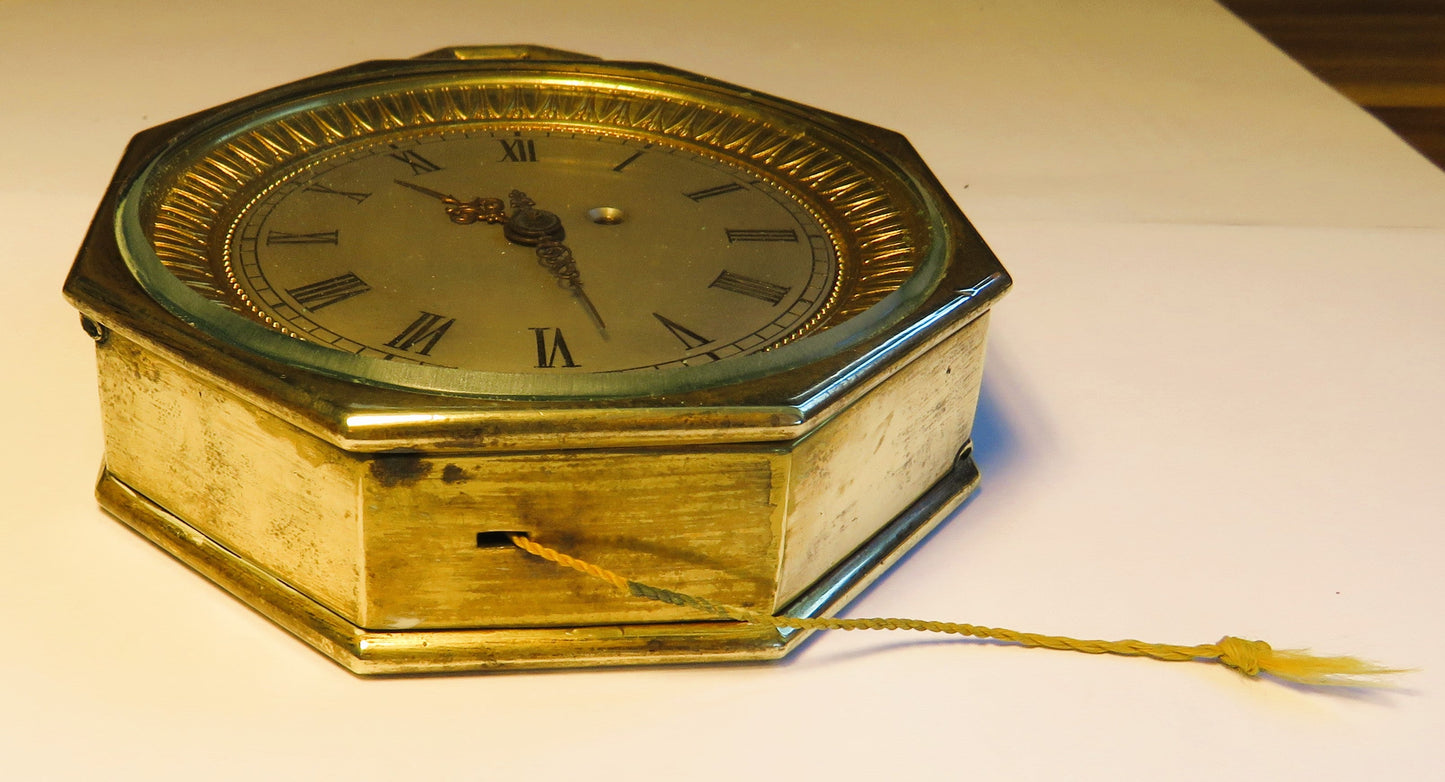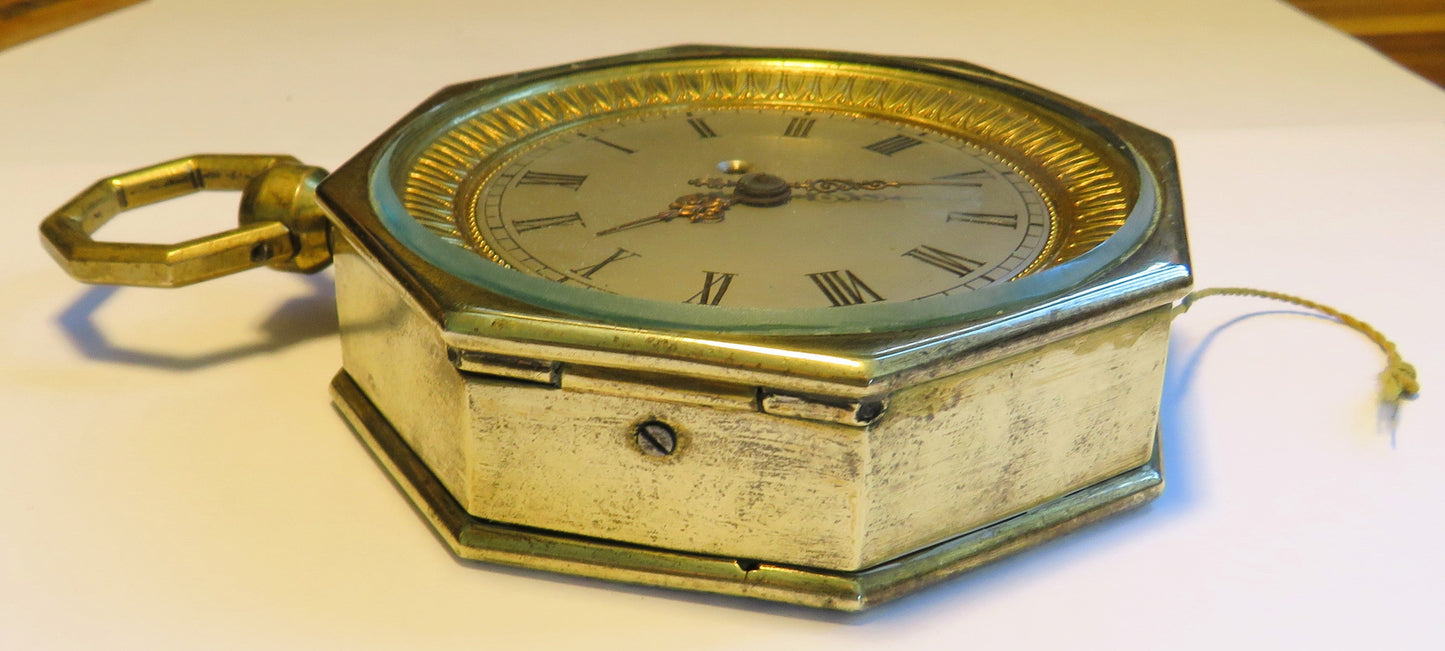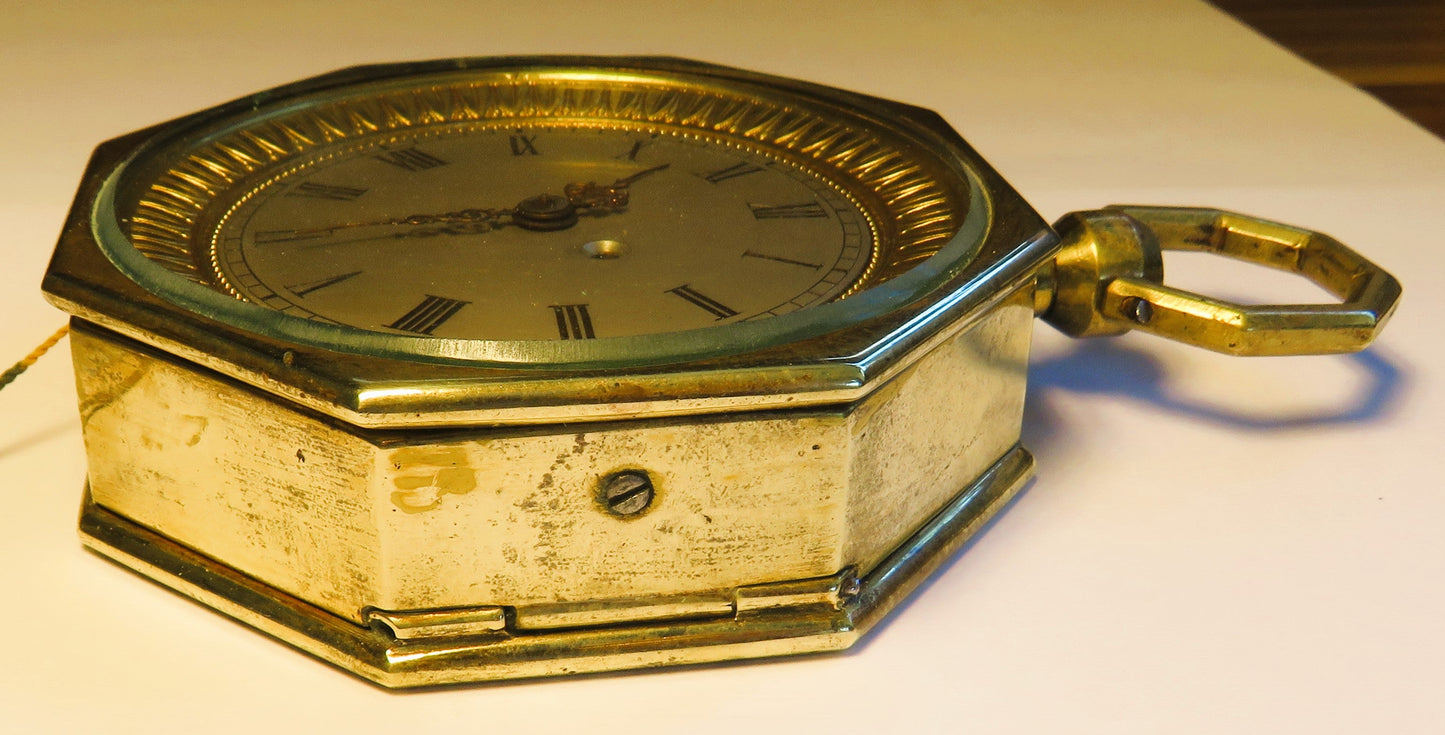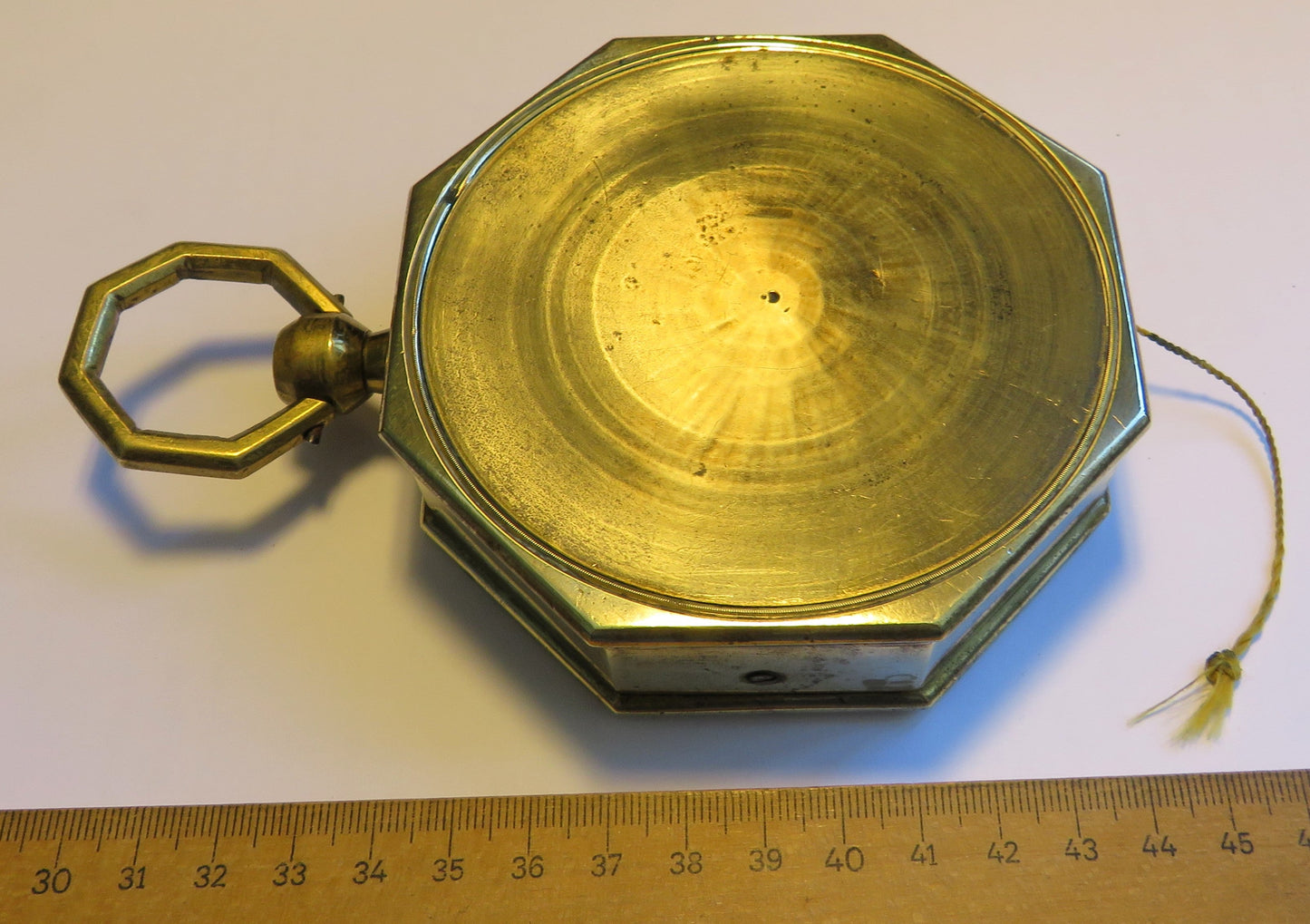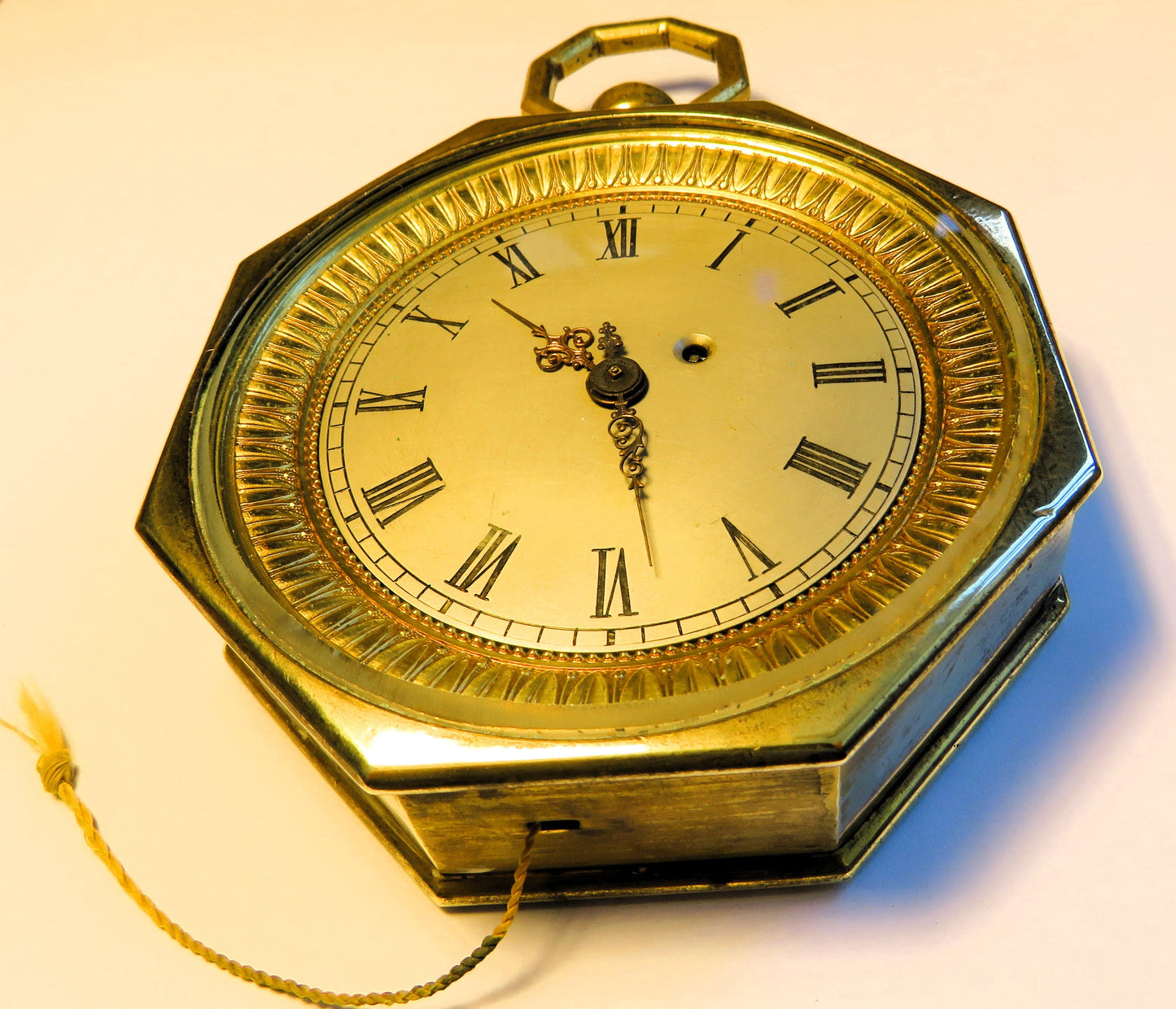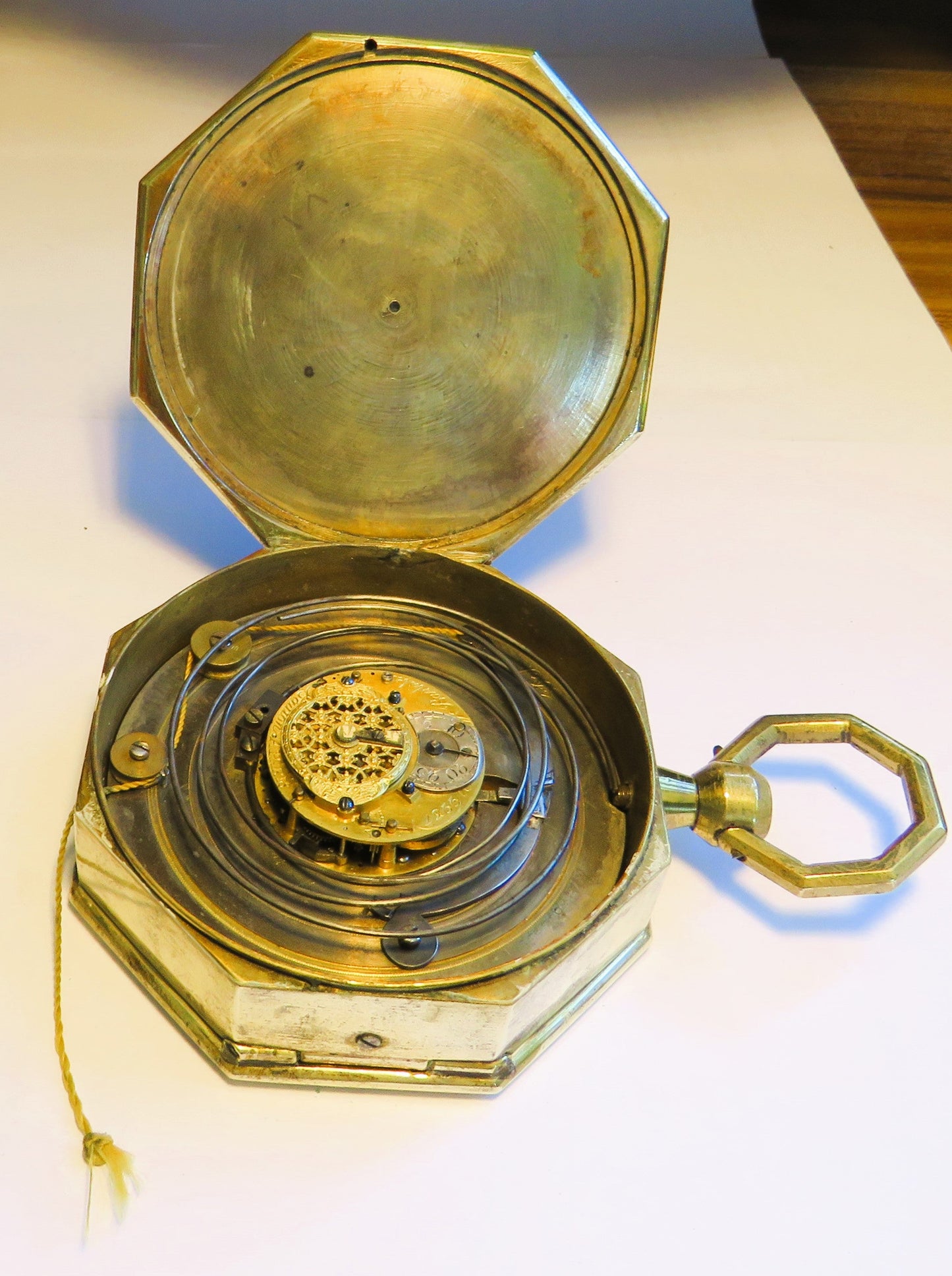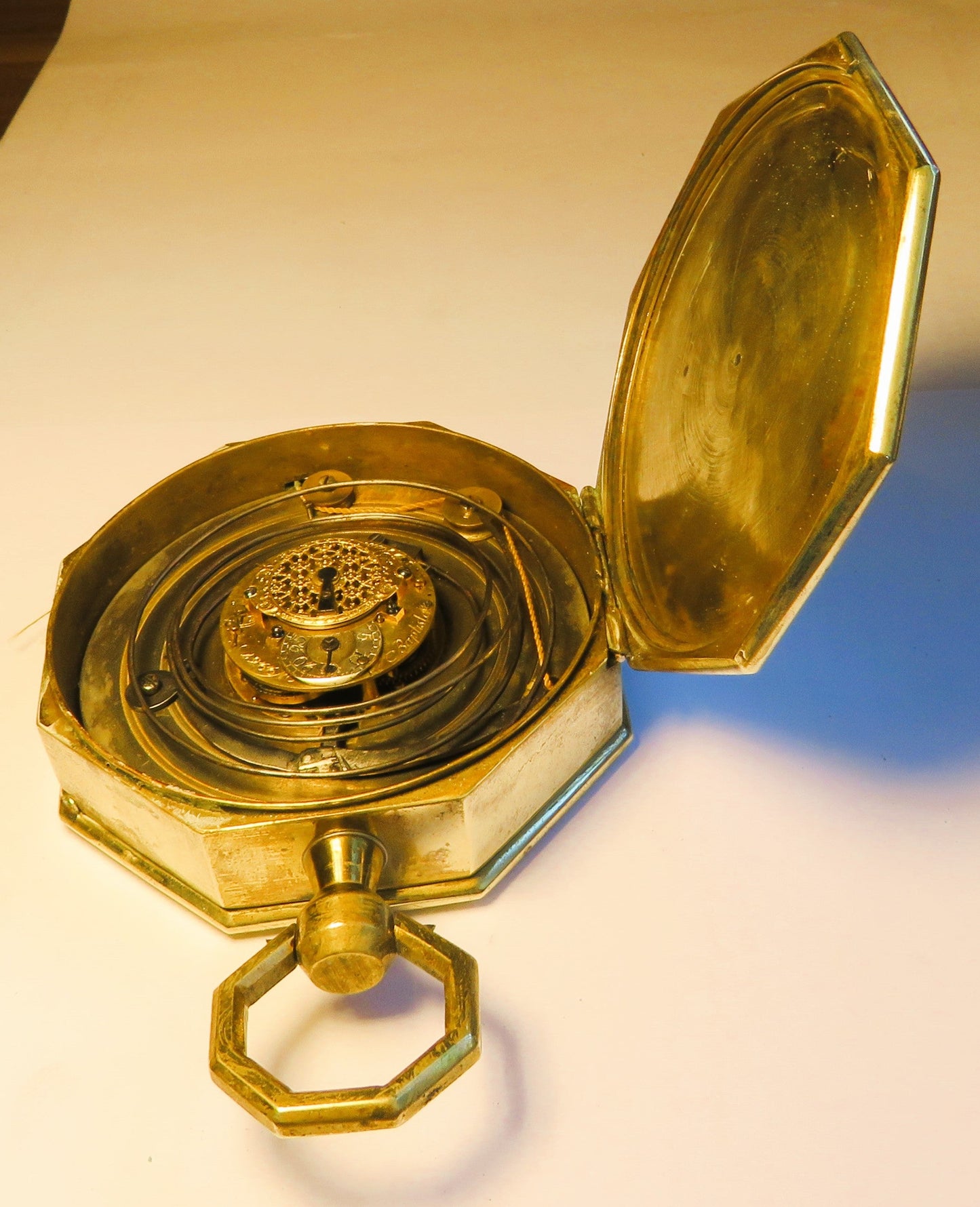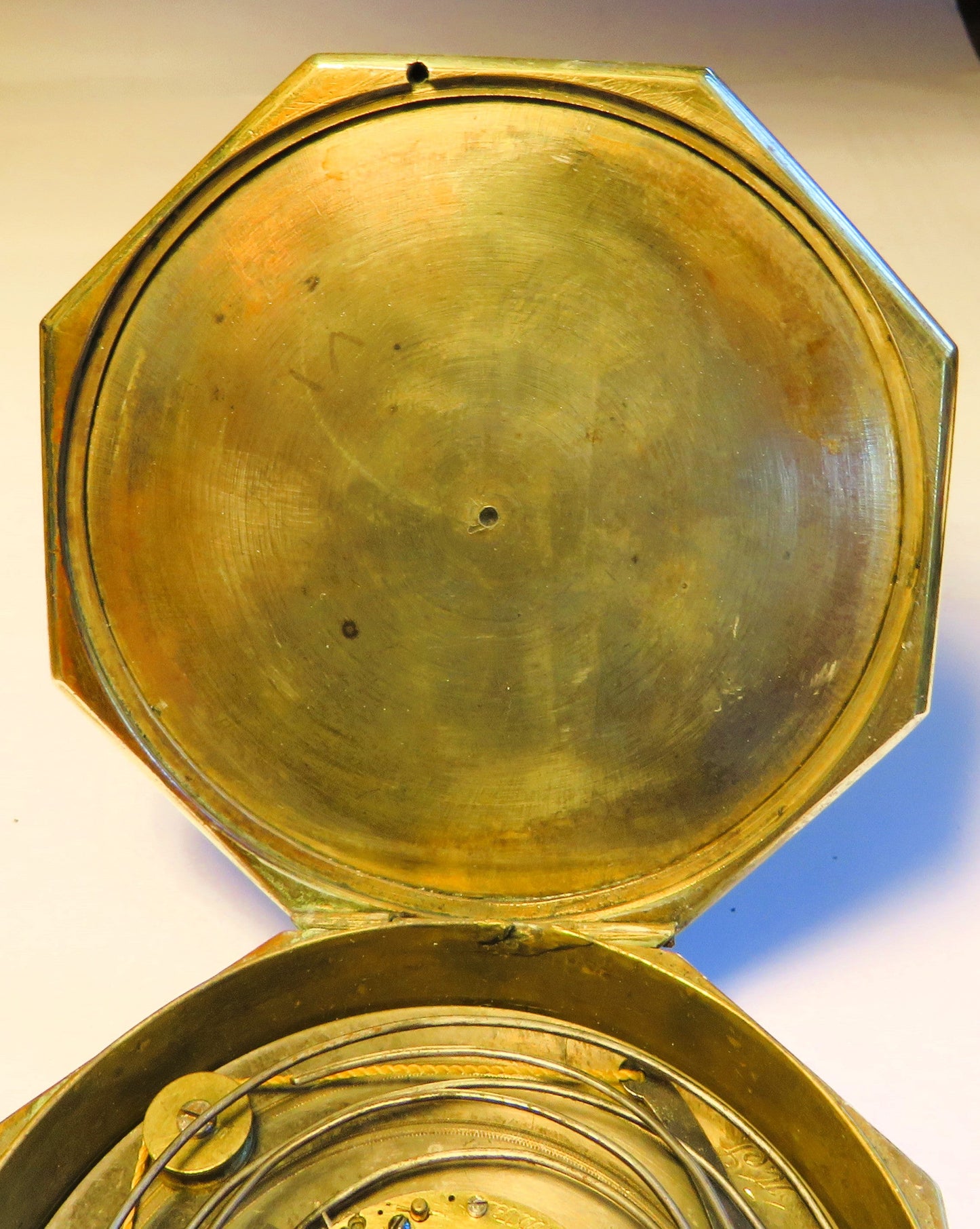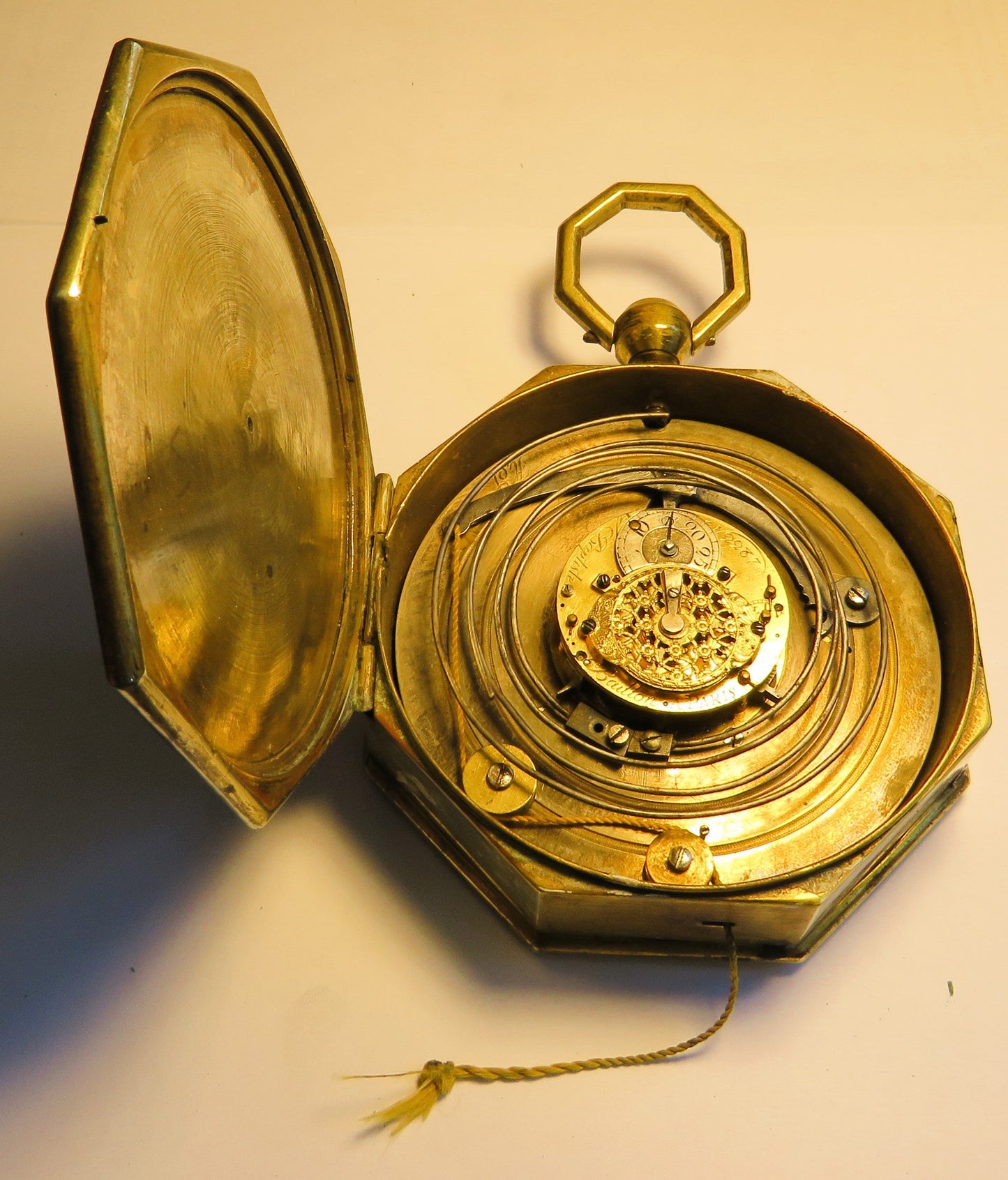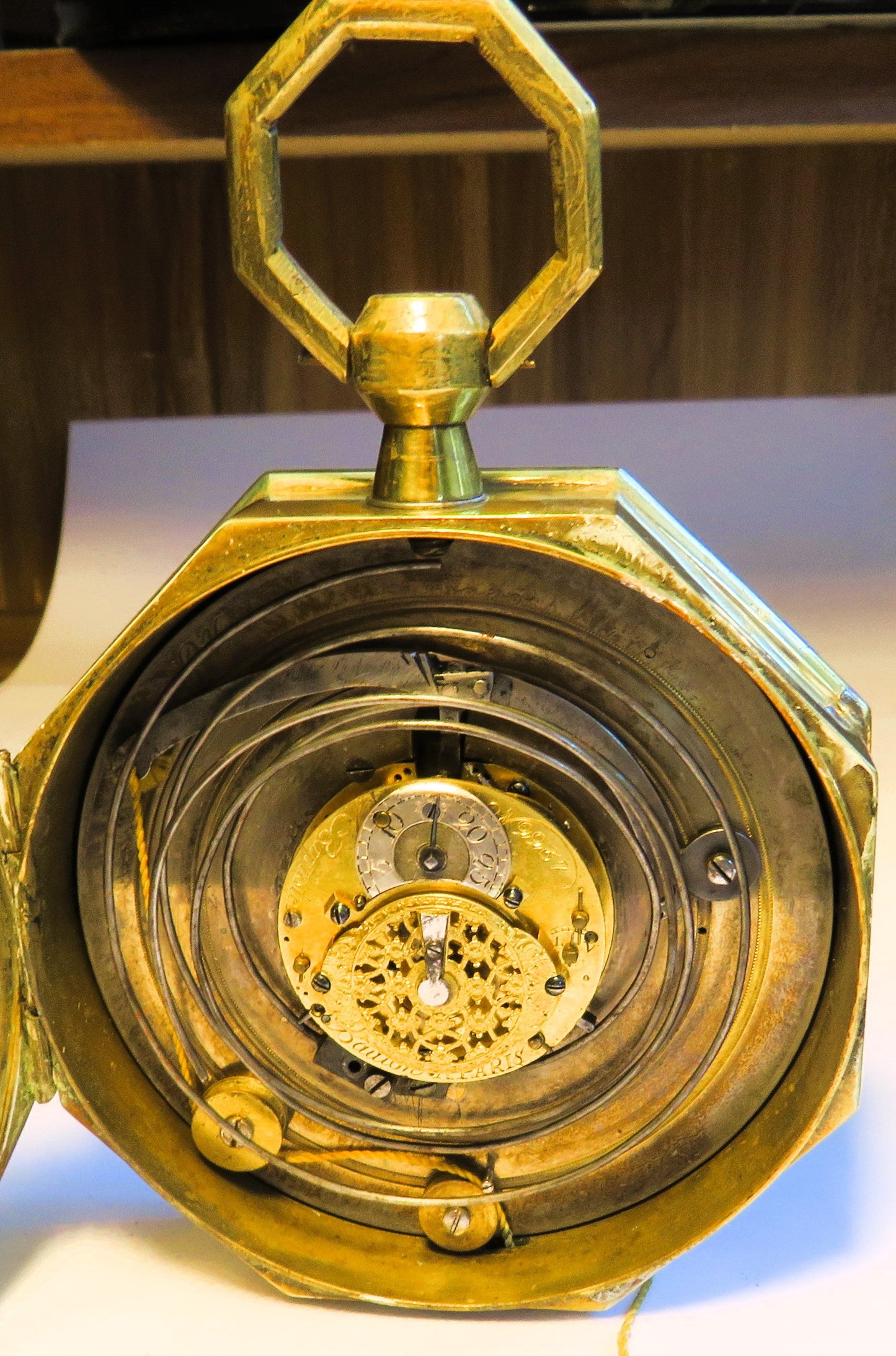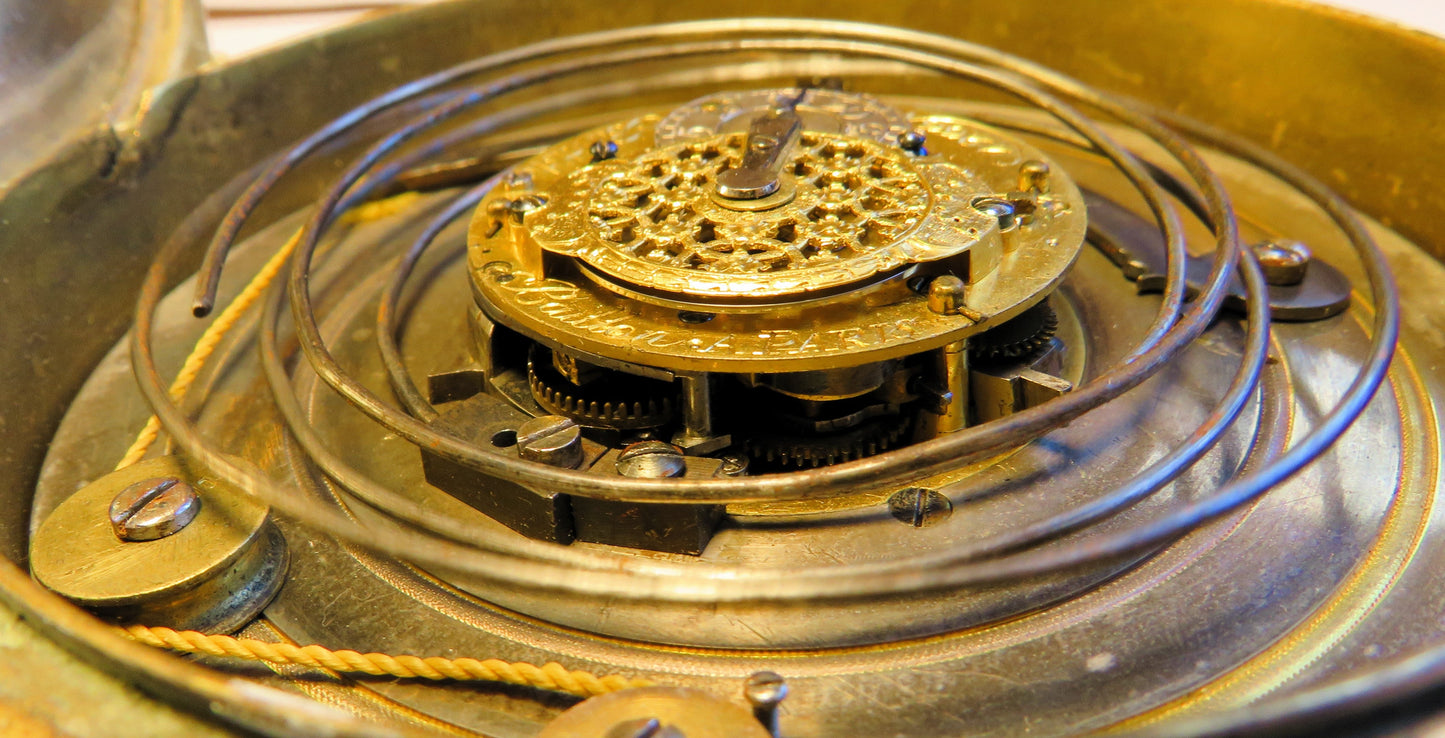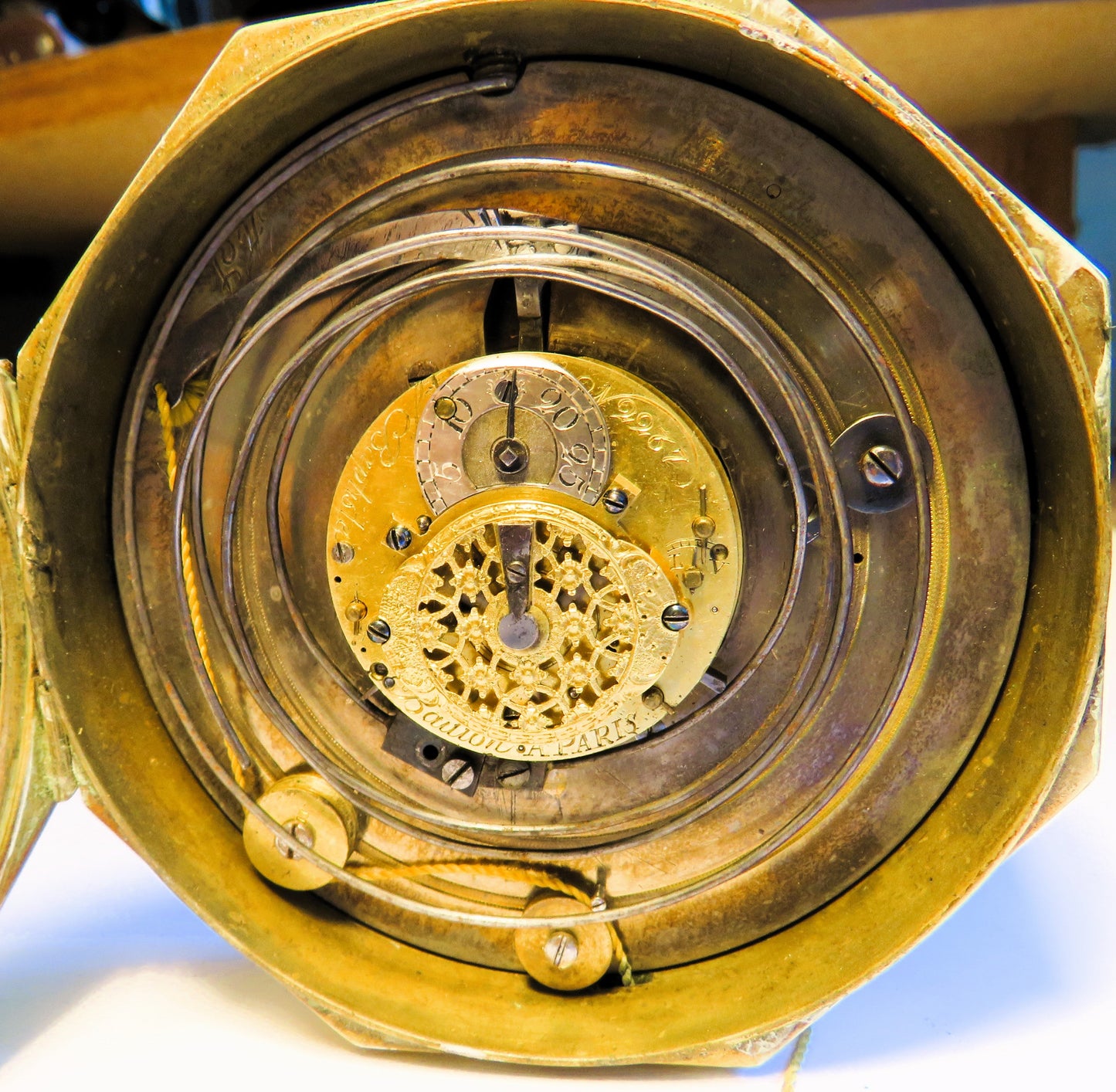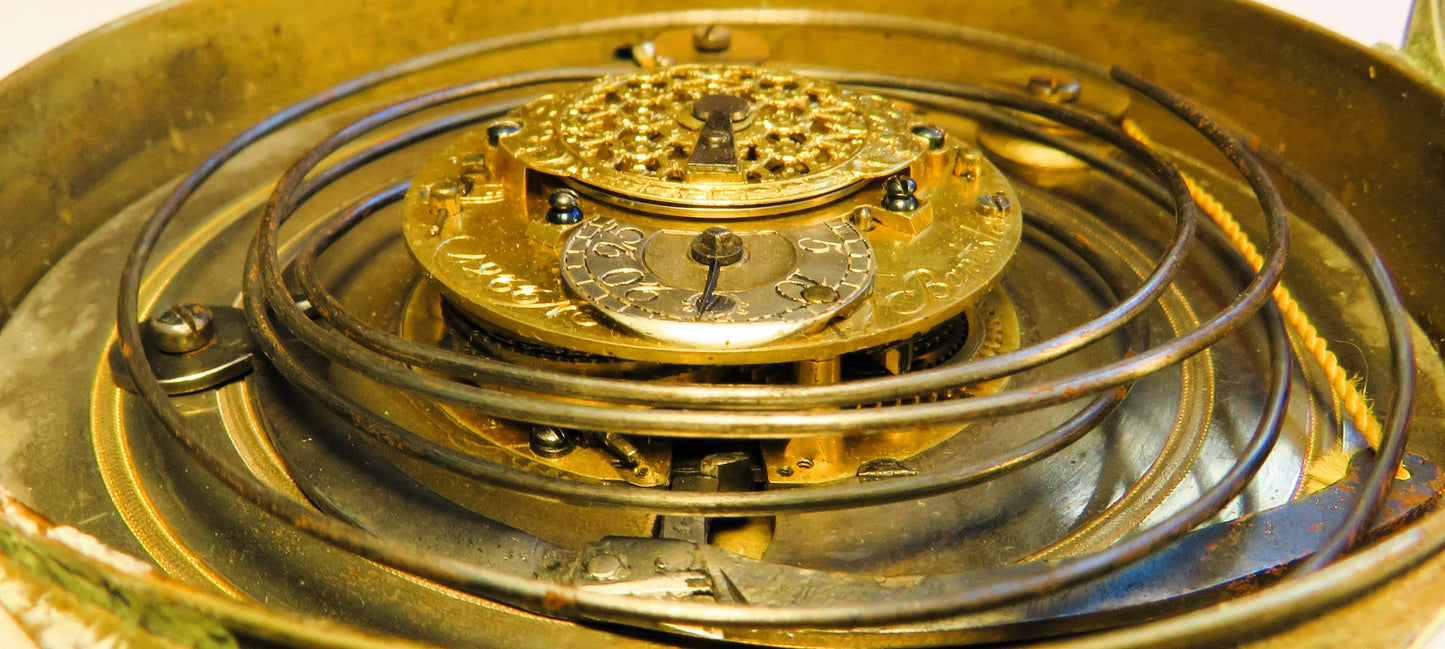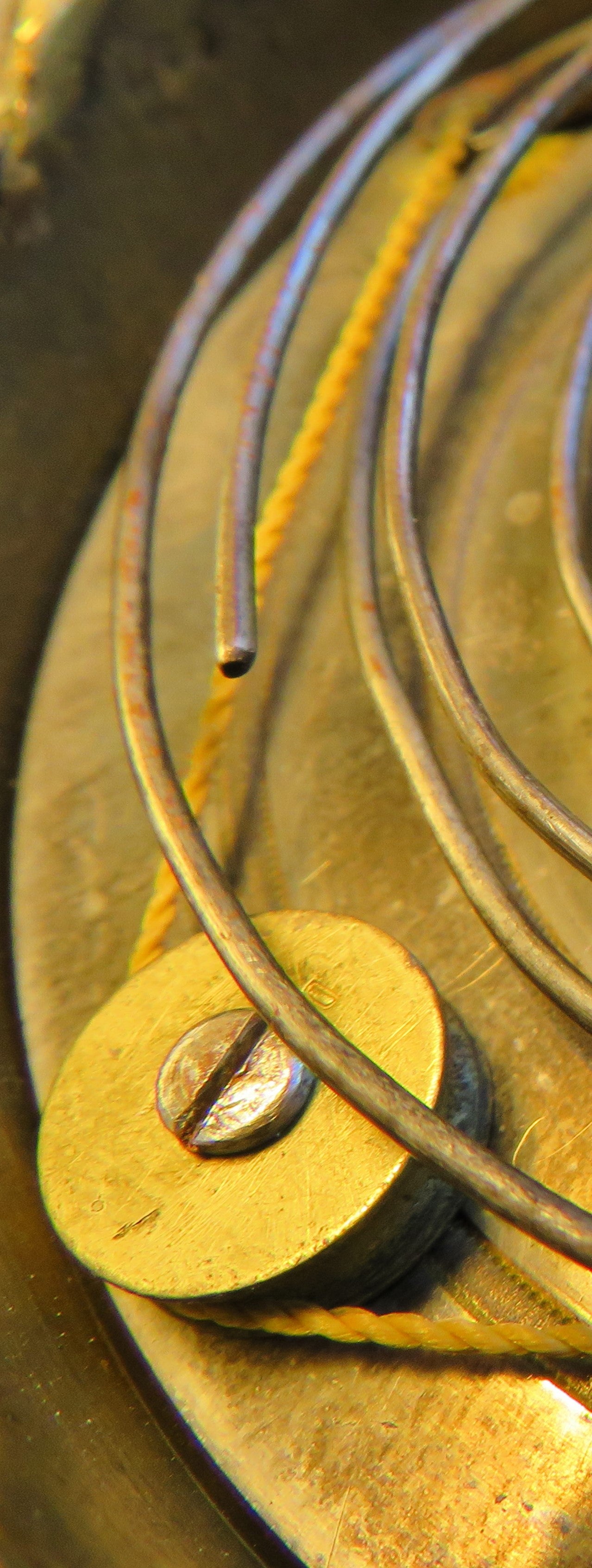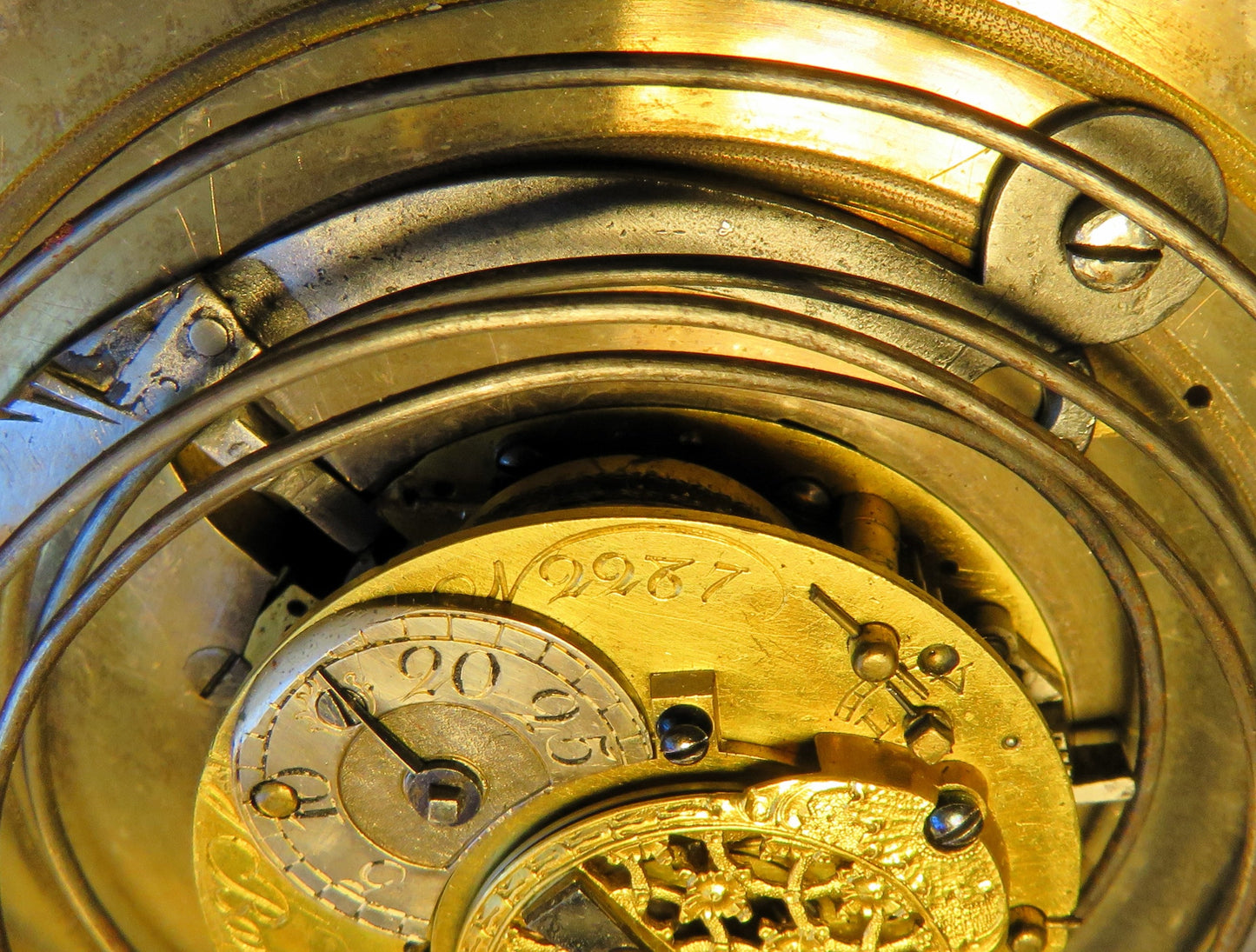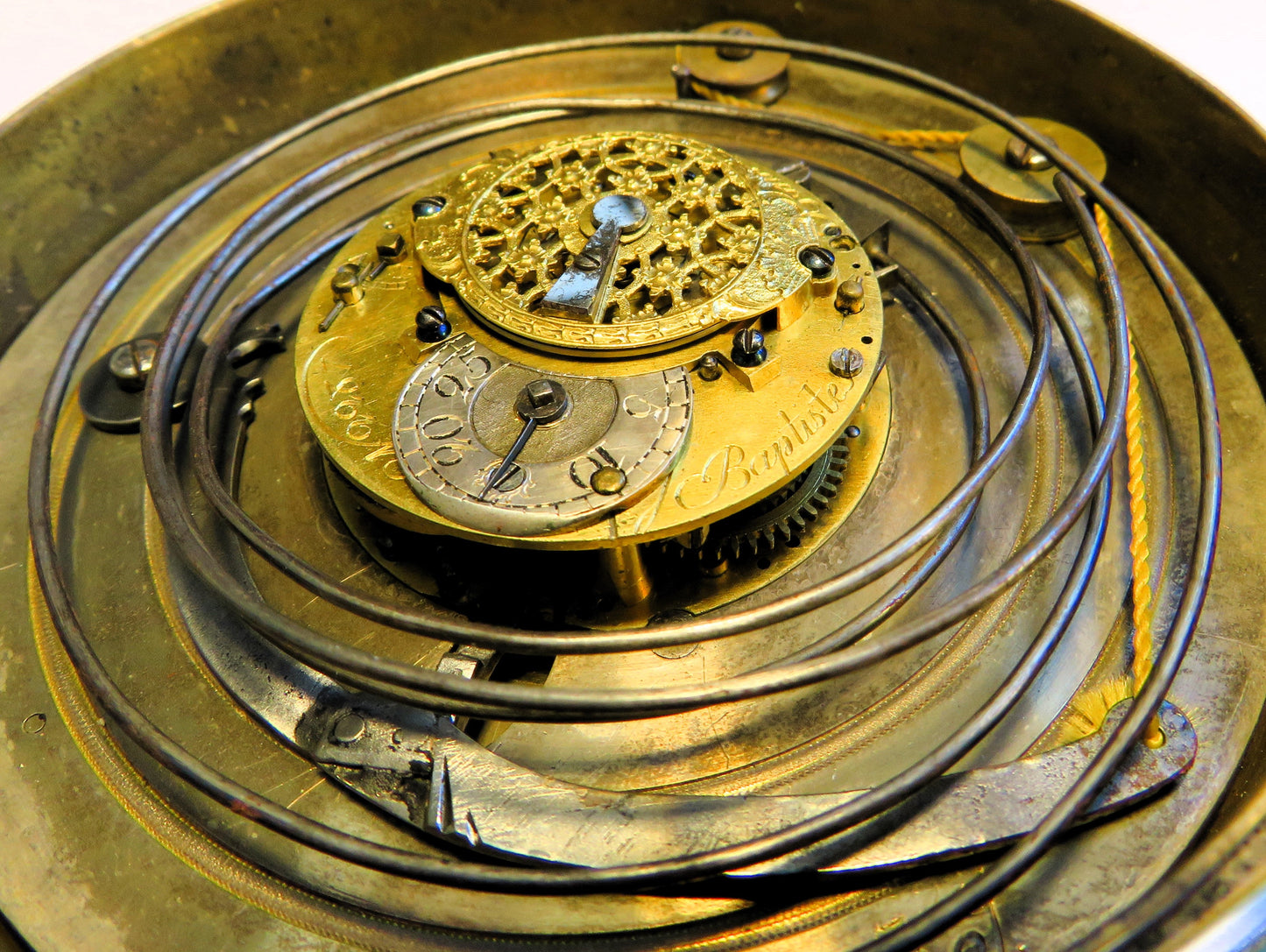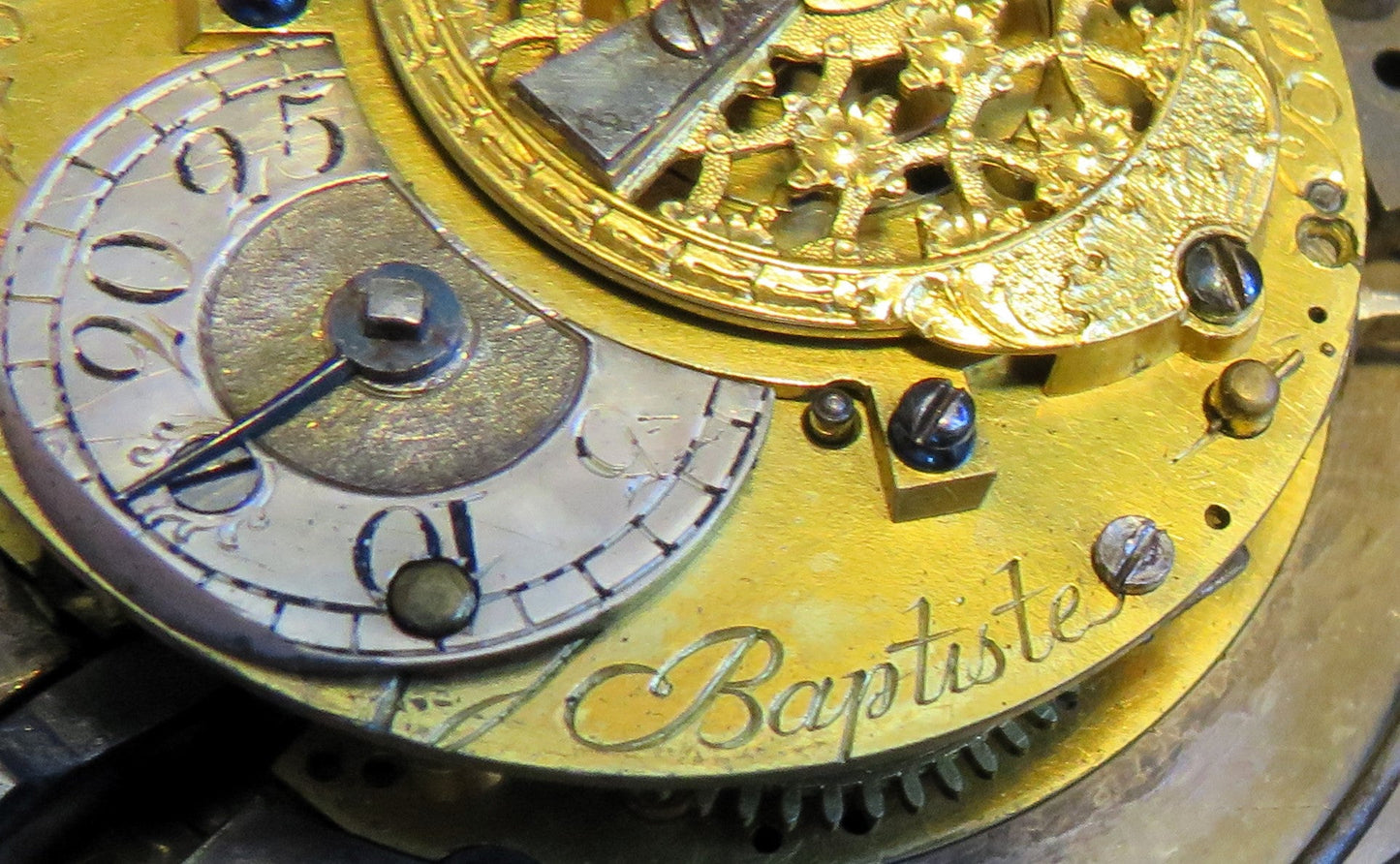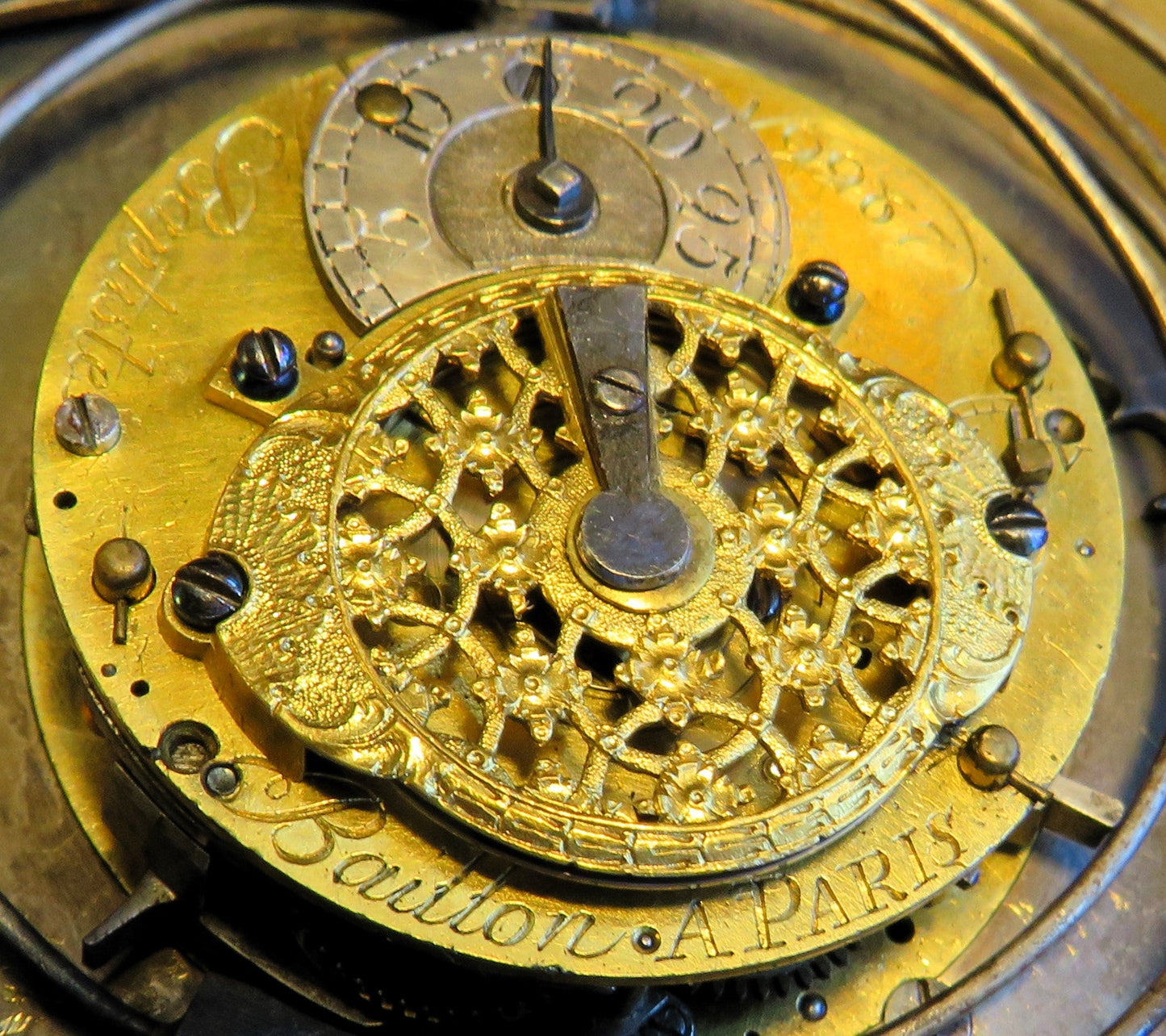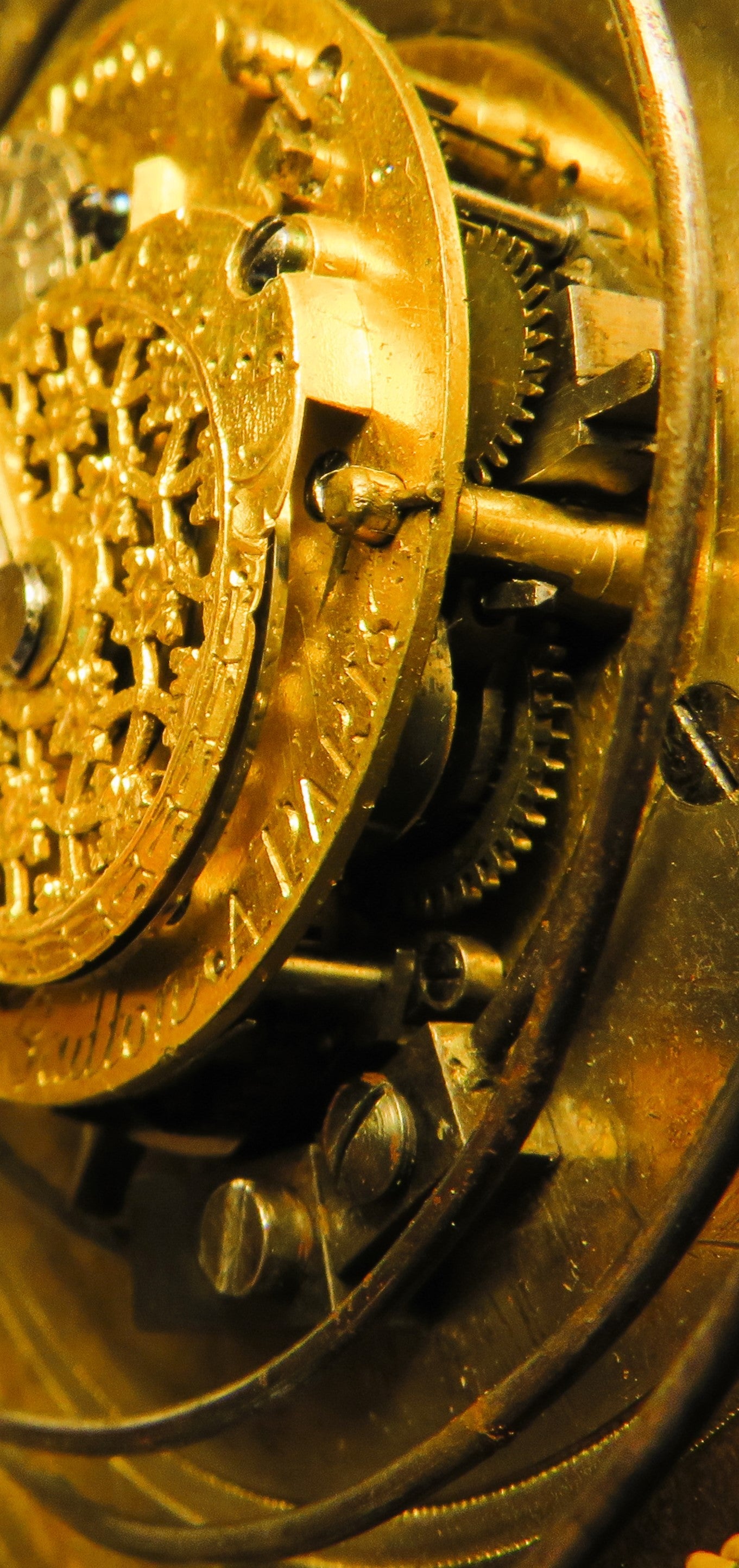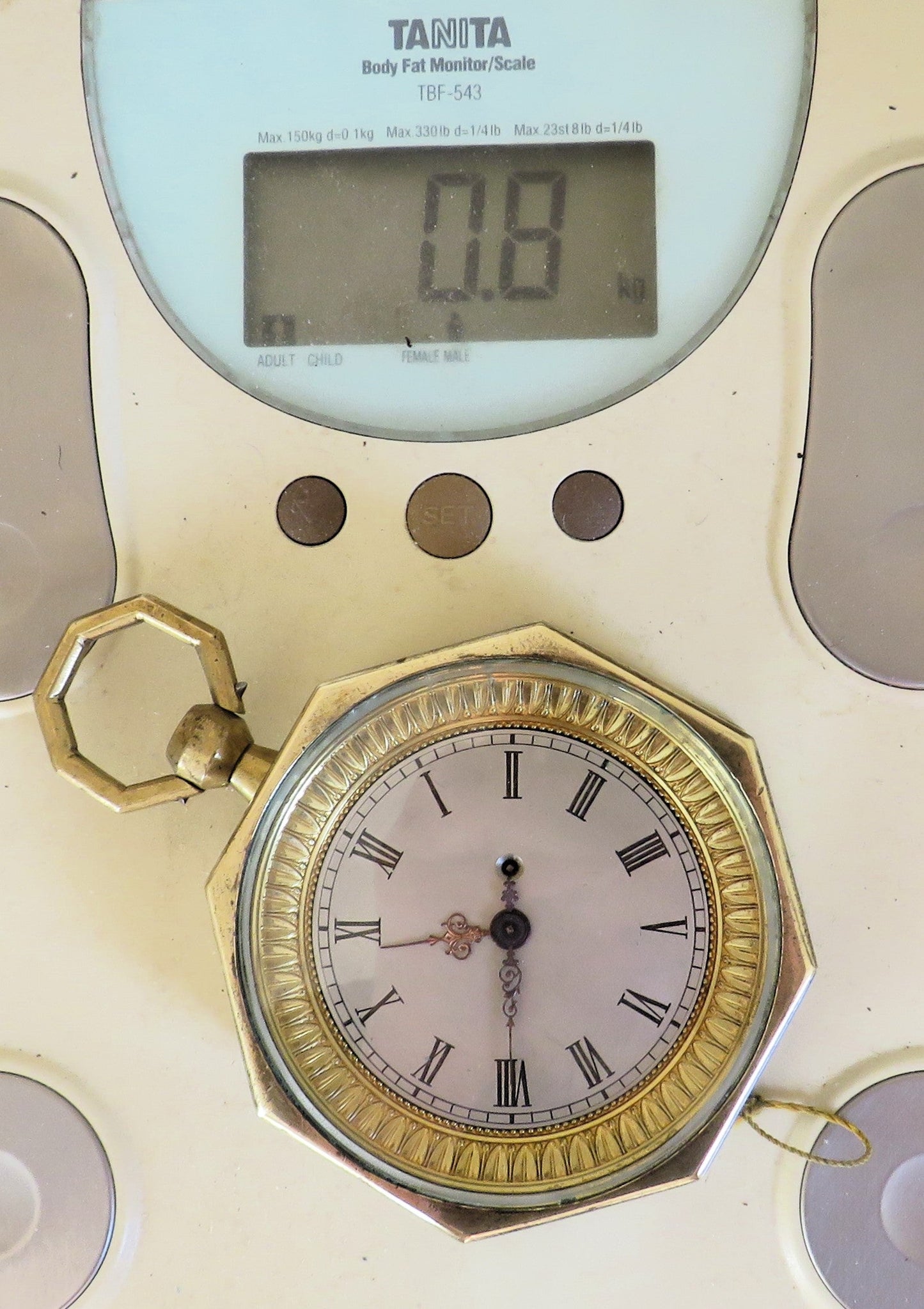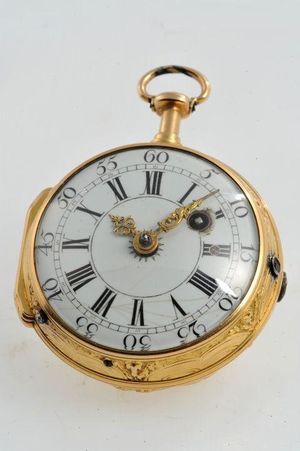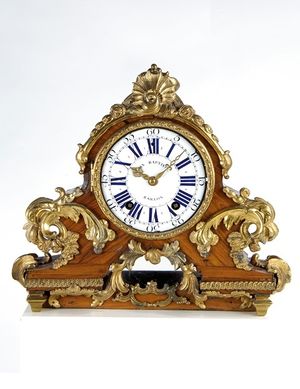Sammler-Uhren
Jean Baptiste Baillon III Paris court clockmaker carriage clock repitition ca. 1740
Jean Baptiste Baillon III Paris court clockmaker carriage clock repitition ca. 1740
Couldn't load pickup availability
Baillon, Jean Baptiste
Baillon, Jean Baptist
Jean Baptiste III Baillon (died 1772) was one of the most skilled and innovative watchmakers of his time. His success was largely based on his ability to establish a large and thriving private factory in Saint-Germain-en-Laye, unique in the 18th-century watchmaking industry. Baillon's father, Jean-Baptiste II (died 1757), a Parisian maître, and his grandfather, Jean-Baptiste I of Rouen, were both watchmakers, as was his own son, Jean-Baptiste IV Baillon (1752–c. 1773). Baillon himself was admitted to the guild as a "maître-horloger" in 1727. In 1738, he received his first important appointment: Valet de Chambre-Horloger Ordinaire de la Reine. He was subsequently appointed First Valet of the Queen's Chamber before 1748, and then First Valet of the Chamber and Valet of the Chamber-Watchmaker Ordinary of the Dauphine to Marie-Antoinette in 1770. In keeping with his position, he settled in the Place Dauphine in 1738 and in the Rue Dauphine in 1751.
Thanks to his success, Jean-Baptiste Baillon amassed an enormous fortune, valued at 384,000 livres at the time of his death on April 8, 1772. Today, Baillon's works can be admired in some of the most prestigious collections in the world, including the Musée du Louvre in Paris, the Palace of Versailles, the New Palace in Bayreuth, and the Metropolitan Museum in New York. Baillon, Jean Baptiste III
-
Baillon, Jean Baptiste III
Skip to navigation Skip to searchParisian watchmaker , France.
Jean-Baptiste Baillon (de Fontenay) was a very famous and, at the time, the richest watchmaker in Paris in the 18th century. He became a master watchmaker in 1727. His shop was first located on the Place Dauphine and later on the Rue Dauphine. He also had his own factory in Saint-Germain-en-Laye, where several watchmakers worked for him, which was quite unusual at the time. The factory was under the direction of Jean Jodin (1715-1761) from 1748 to 1757 , but it closed in 1765 .
Baillon was watchmaker to the Queen of France, Maria Leczinska ( 1738 ), "Valet de Chambre-Horloger Ordinaire de la Reine," around 1748 "Premier Valet de Chambre de la Reine," and from around 1770 , watchmaker to the court of Queen Marie Antoinette, "Premier Valet de Chambre and Valet de Chambre-Horloger Ordinaire de la Dauphine to Marie-Antoinette." Ferdinand Berthoud was very impressed by Baillon's factory and business, its size and outstanding quality. In 1753, Berthoud wrote of Baillon's business, "It is currently the most beautiful and richest watch shop." "Diamonds were used not only on pocket watches, but also on large clocks."
Examples of his work can be found, among others, in the Musée des Arts et Métiers , Musée du Louvre in Paris, Château de Versailles , Musée Paul-Dupuy in Toulouse, Royal Musea voor Kunst en Gescheidis in Brussels, Museo Galileo in Florence, Science Museum and Victoria and Albert Museum in London , Metropolitan Museum of Art in New York.
Jean-Baptiste-Albert Baillon died exceptionally wealthy in 1772 , probably at the end of March. His fortune was assessed on April 8, 1772 , at 384,000 livres (a French unit of silver currency). His private collection of decorative arts was auctioned on June 16 , 1772. On February 23, 1773, the entire stock of clocks was sold.
His father was the watchmaker Jean-Baptiste II Baillon and grandfather of the watchmaker Jean-Baptiste I Baillon , who worked in Rouen. His son Jean-Baptiste IV Baillon (1752-1773) was also a watchmaker in Paris.

